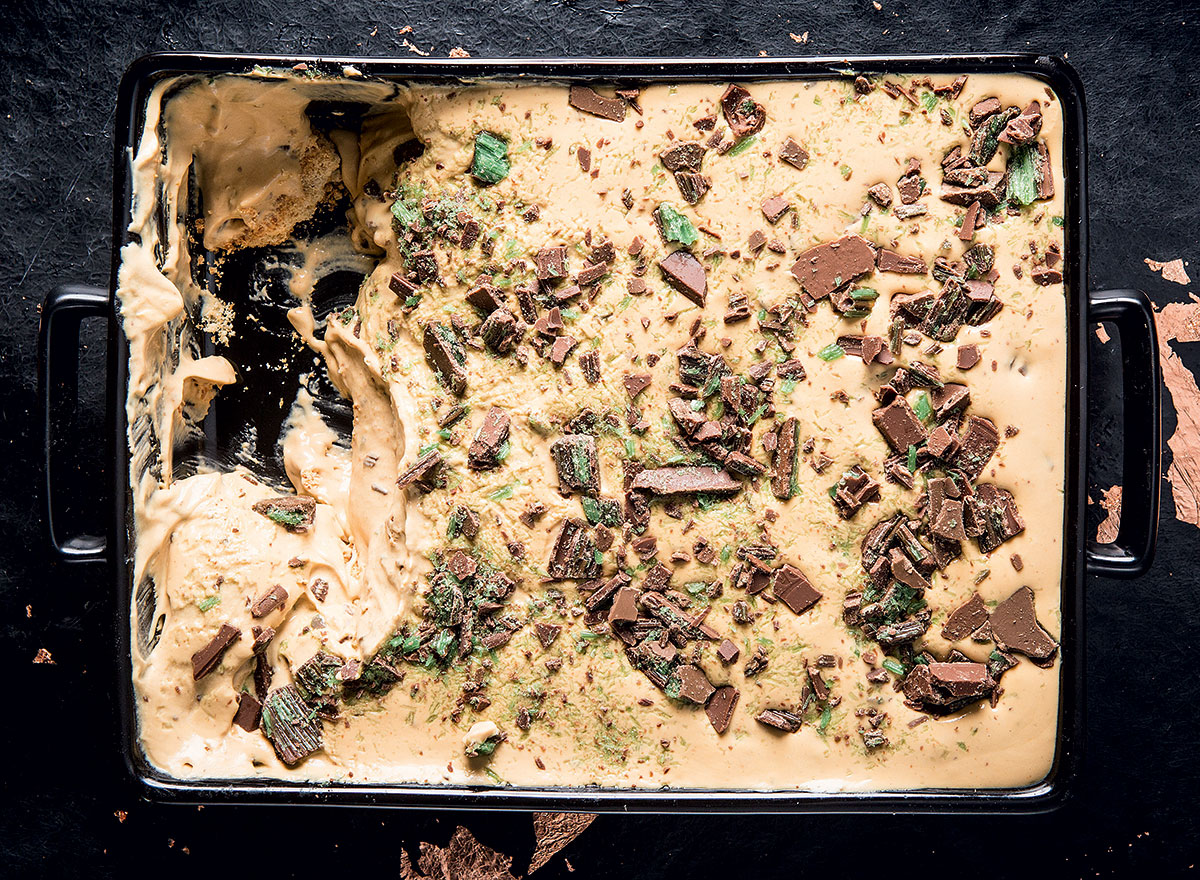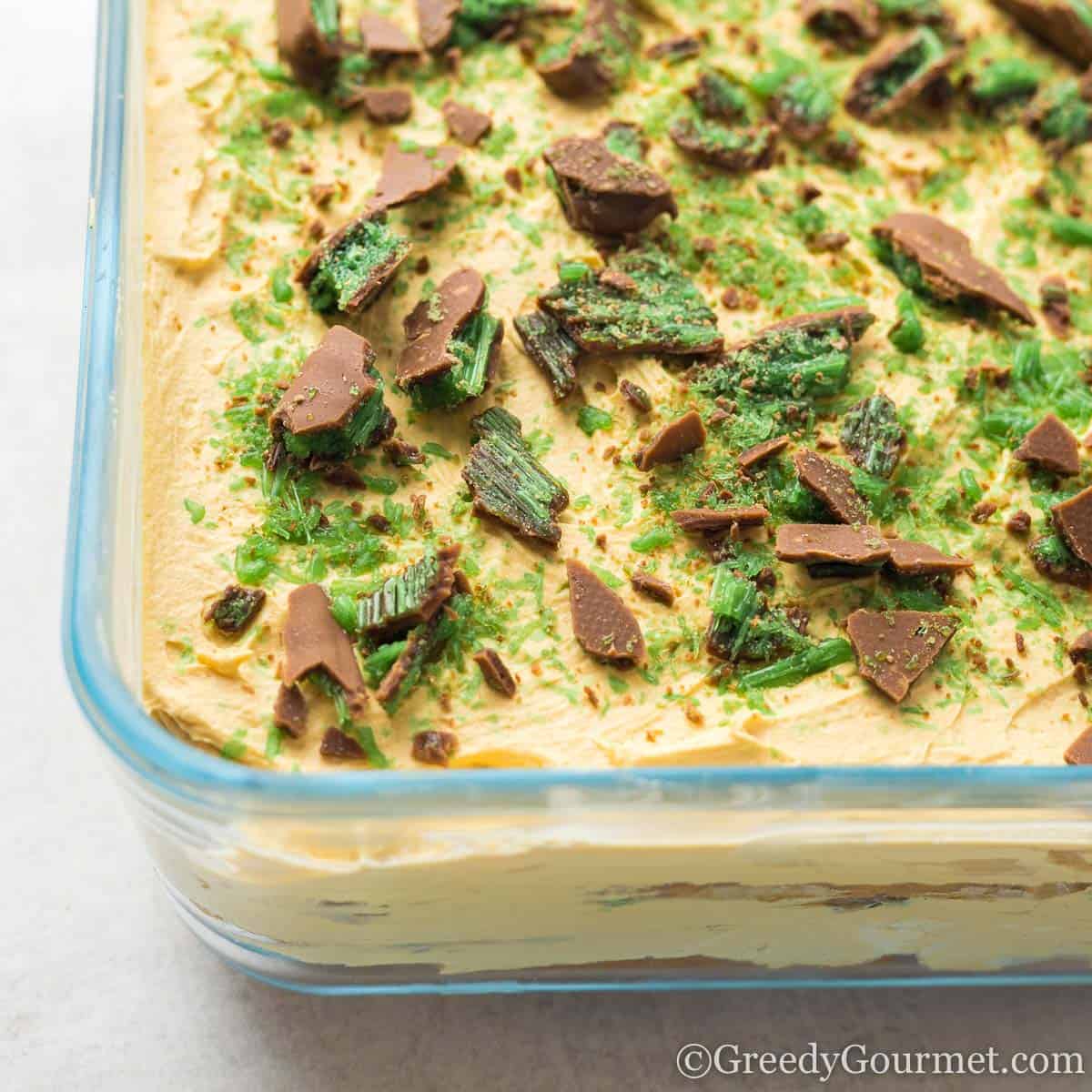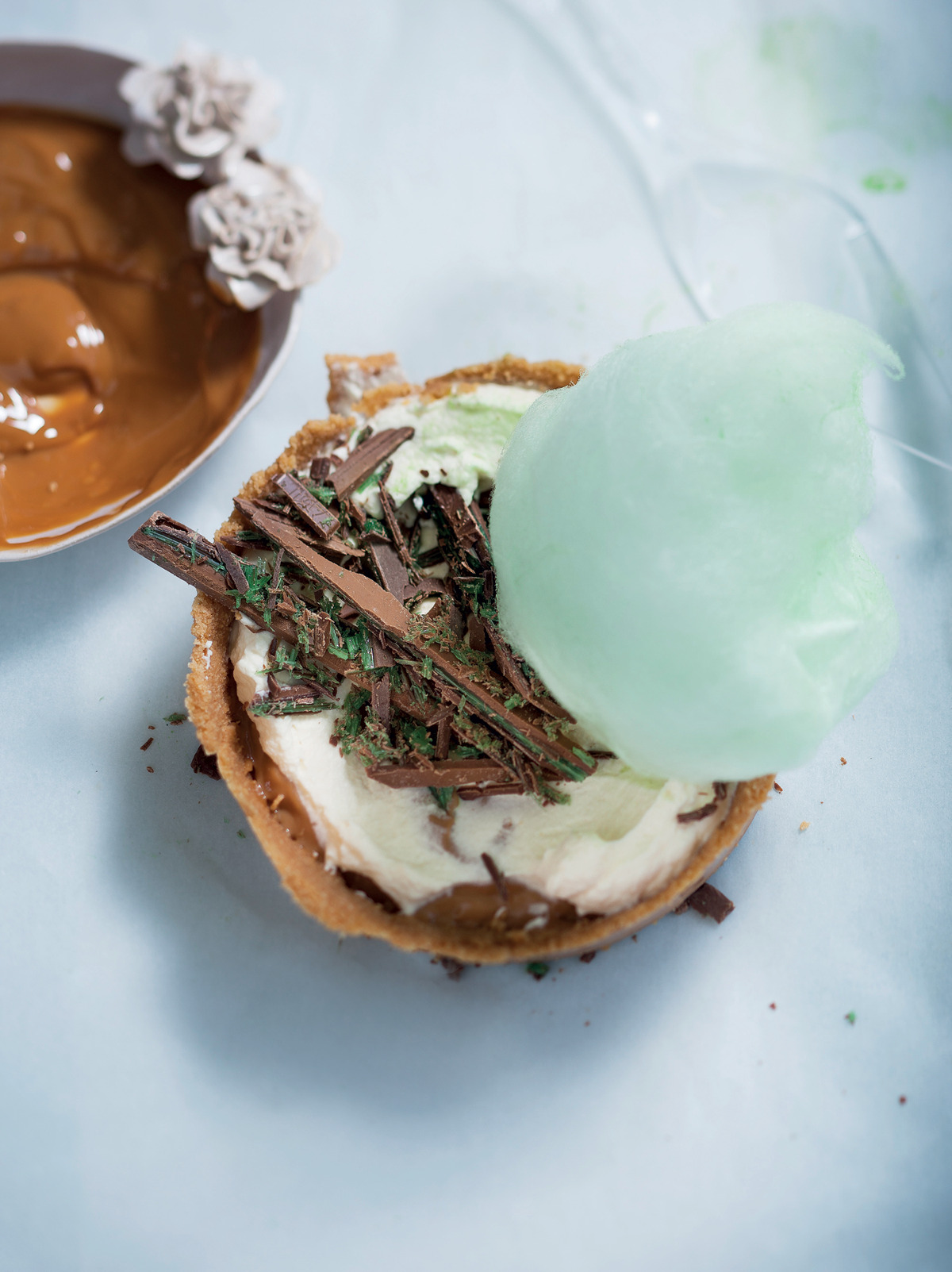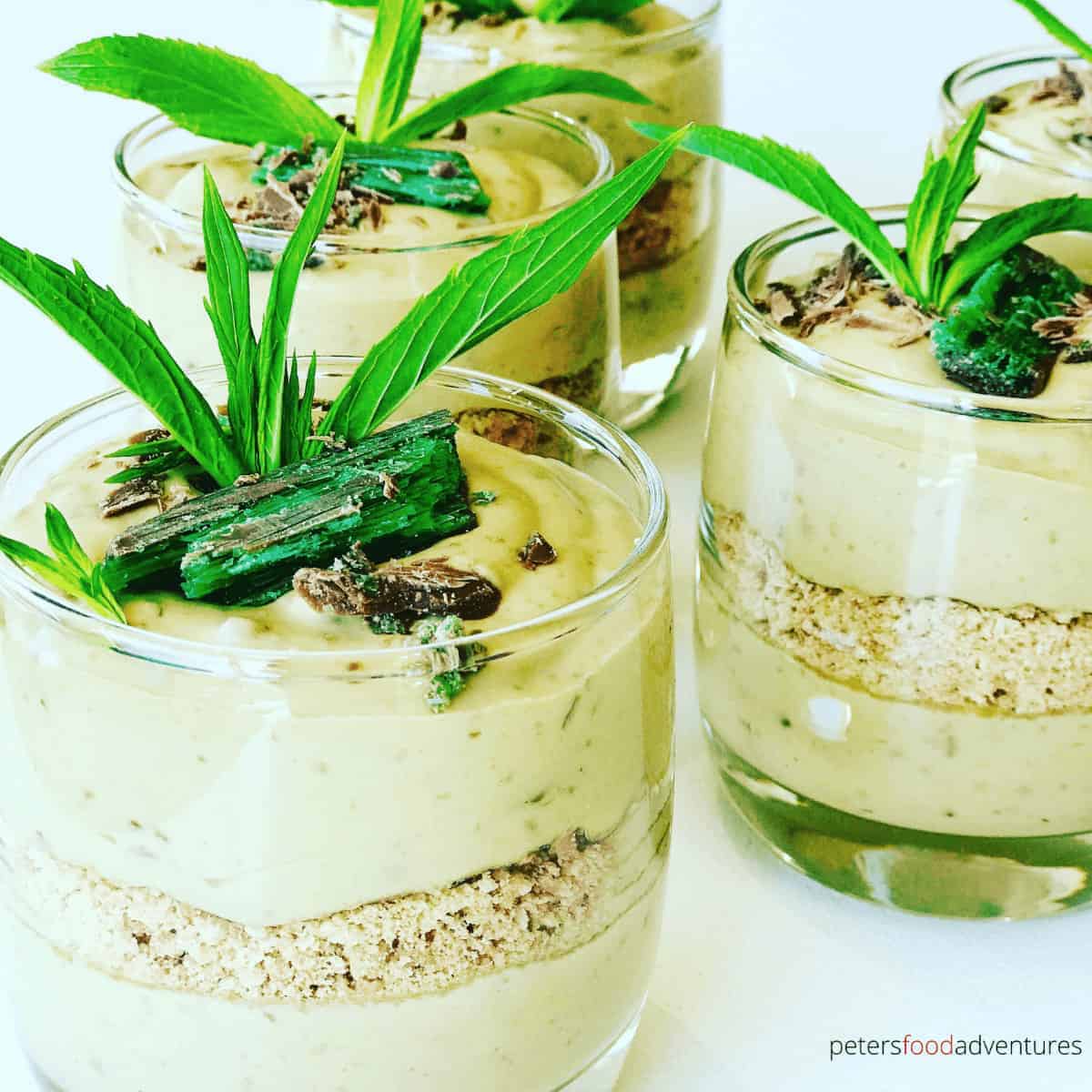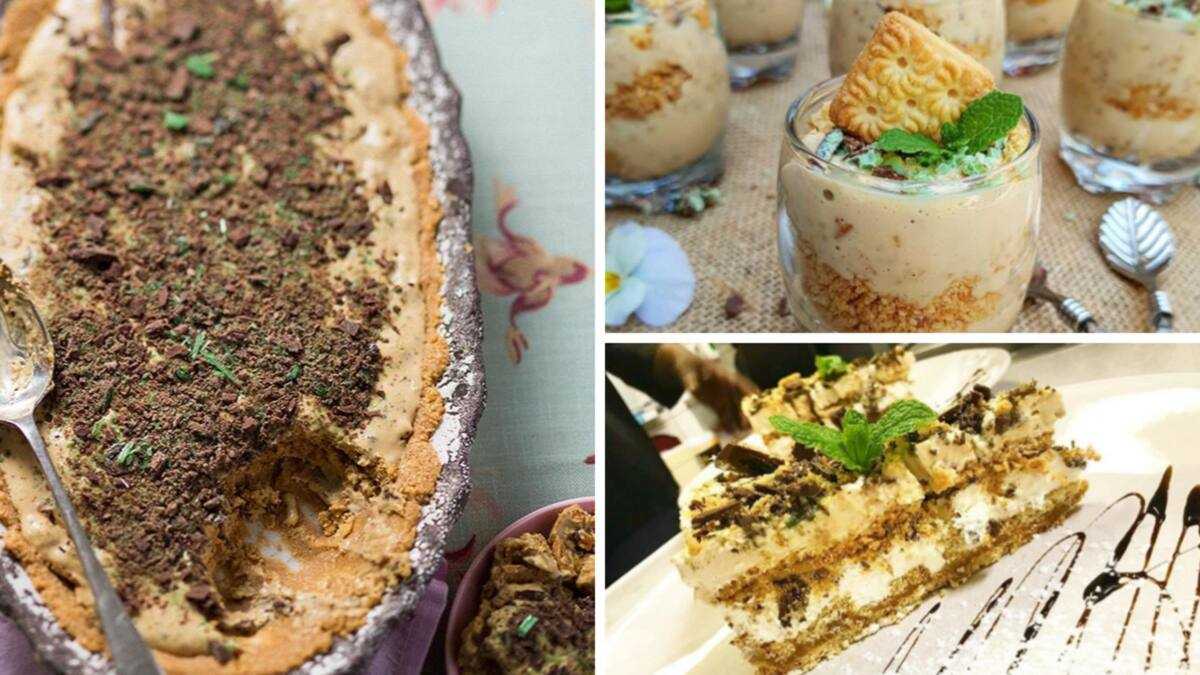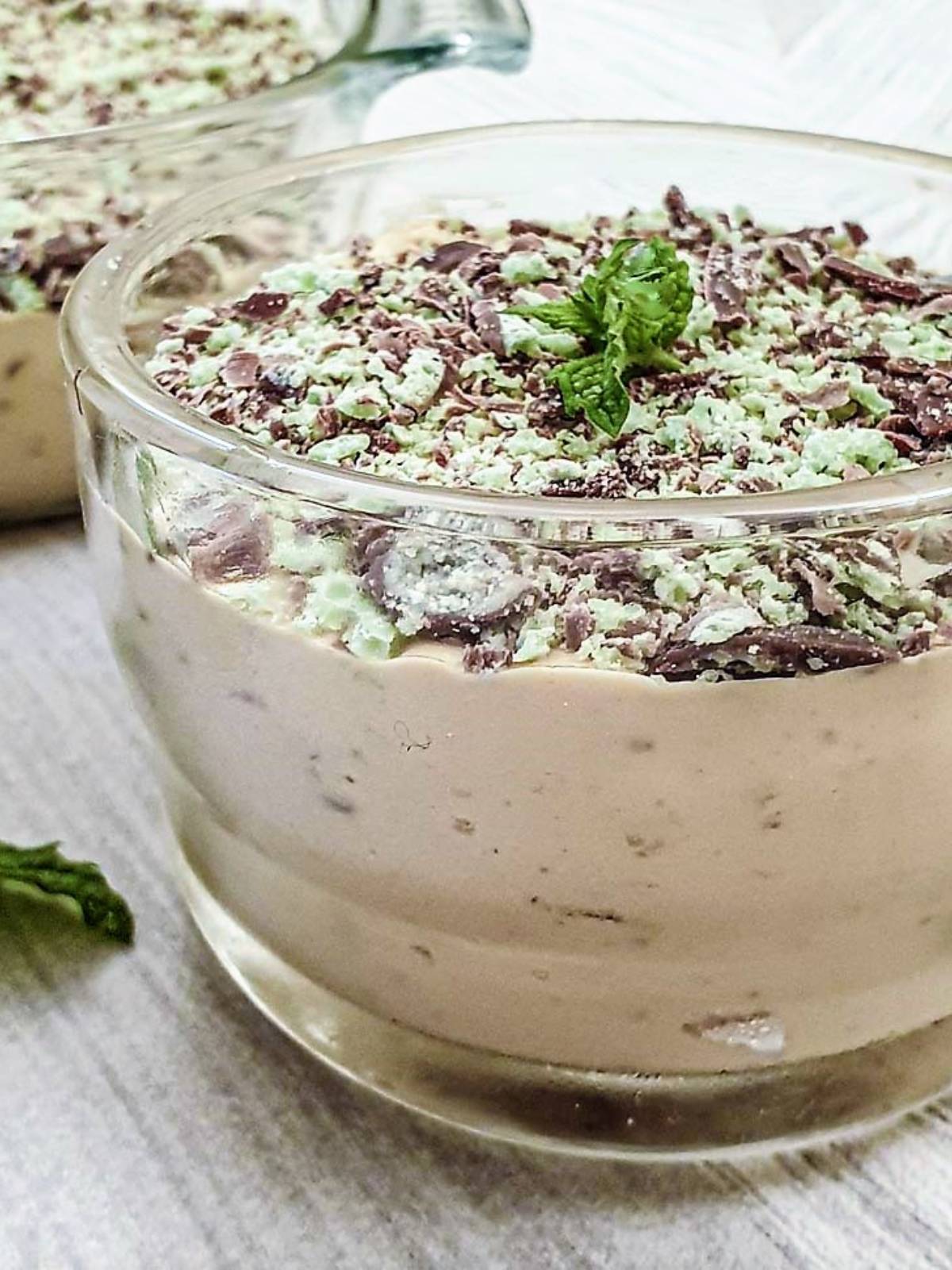Peppermint crisp tart
peppermint crisp fridge tart
South African cuisine reflects the diverse range of culinary traditions embodied by the various communities that inhabit the country. Among the indigenous peoples of South Africa, the Khoisan foraged over 300 species of edible food plants, such as the rooibos shrub legume, whose culinary value continues to exert a salient influence on South African cuisine. Subsequent encounters with Bantu pastoralists facilitated the emergence of cultivated crops and domestic cattle, which supplemented traditional Khoisan techniques of meat preservation. In addition, Bantu-speaking communities forged an extensive repertoire of culinary ingredients and dishes, many of which are still consumed today in traditional settlements and urban entrepôts alike. The San peoples were hunter-gatherers, who mostly depended on foods like tortoises, crayfish, coconuts and squash. Agriculture was introduced to South Africa by the Bantu peoples, who continue in the cultivation of grain, starch fruit and root tubers — in the manner of maize, squash and sweet potatoes, following their introduction in the Columbian exchange, displacing the production of many Old World food crops. Mabele and madumbe (cocoyam, taro, or arrowroot) also continue to be widely cultivated.
Source: Wikipedia

